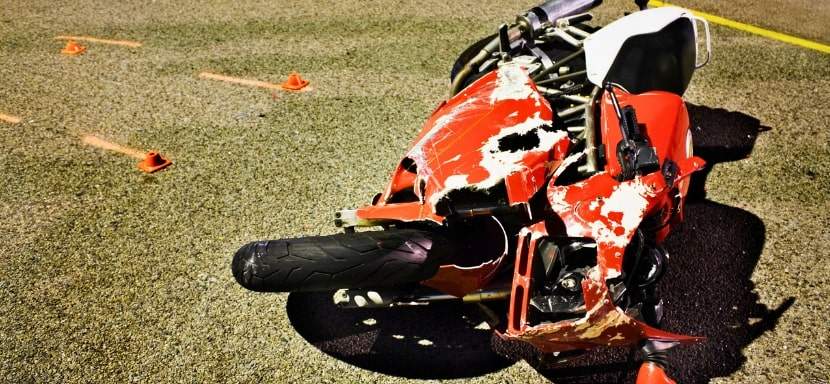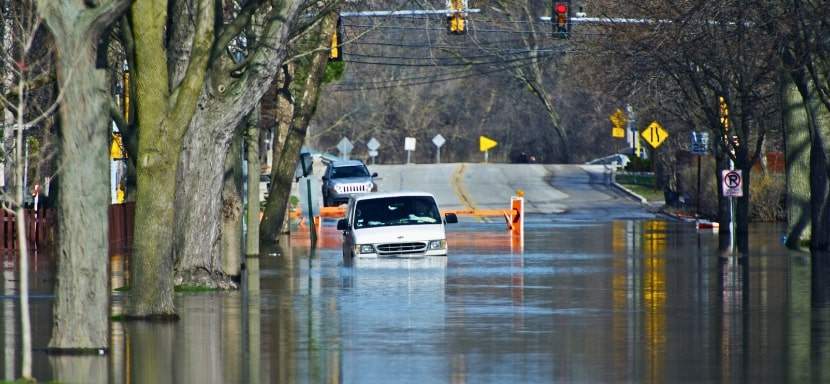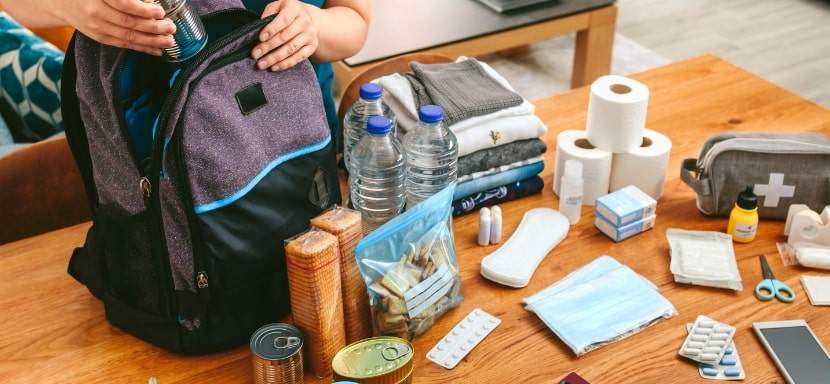How to Survive a Snowmobile Accident

Snowmobile Accident Survival: Top Tips You Need
Equip yourself with vital knowledge to handle snowmobile accidents confidently, transforming uncertainty into preparedness.
Accidents happen, even when you’re enjoying the snowy trails on your snowmobile. Whether you’re an experienced rider or a novice, unexpected challenges can arise that may lead to an accident. Knowing what to do in a snowmobile accident can mean a quick recovery and a dire situation. From harsh weather conditions to mechanical failures and human error, various factors can turn a fun ride into a dangerous ordeal.
This comprehensive guide will provide you with practical steps to survive a snowmobile accident. It covers everything from immediate actions to long-term safety tips, ensuring you can get back to winter fun in no time. With the right knowledge and preparation, you can confidently face any challenges on the snowy trails, keeping yourself and others safe.
Key Points
- Immediate Response: Stay calm, assess the situation, and signal for help to increase your chances of survival.
- First Aid Knowledge: Treat minor injuries and manage severe ones to prevent further complications.
- Preventative Measures: Prepare adequately before your ride, including checking weather conditions, inspecting your snowmobile, and wearing proper safety gear.
Top Ten Quick Tips for Surviving a Snowmobile Accident
Accidents can happen when you least expect them, but being prepared can make all the difference. Here are ten quick tips to help you survive a snowmobile accident and stay safe on the snowy trails.
- Stay Calm: Panic can impair your judgment; take deep breaths and focus on assessing the situation.
- Check for Injuries: Perform a quick self-check and look for injuries on others; prioritize severe cases.
- Signal for Help: Use your phone, two-way radio, whistle, or brightly colored clothing to attract attention.
- Stay Warm: Replace wet clothing with dry, insulated gear to prevent hypothermia.
- Immobilize Injuries: Makeshift splints stabilize broken bones and avoid unnecessary movement.
- Seek Shelter: Protect yourself from the elements by finding or creating a shelter.
- Use GPS: Navigate using your snowmobile’s GPS or recall landmarks to find your way back to safety.
- Conserve Energy: If rescue is not immediate, ration your energy and stay put unless you know your route.
- Stay Hydrated: Drink water to stay hydrated and maintain your strength.
- Report the Accident: Once safe, inform authorities about the incident for documentation and assistance.
Understanding the Risks
Snowmobiling is a thrilling activity, but it comes with its own set of risks. From navigating rugged terrains to dealing with unpredictable weather, there’s always a chance of encountering trouble. Awareness of these risks can help you prepare and respond effectively.
Common Causes of Snowmobile Accidents
Several factors can lead to a snowmobile accident, including:
- Speeding: High speeds reduce reaction time and increase the severity of crashes.
- Poor Visibility: Snowstorms, fog, and nighttime riding can impair vision.
- Alcohol Consumption: Drinking and driving don’t mix, especially on a snowmobile.
- Inexperience: Lack of familiarity with the snowmobile and terrain.
- Mechanical Failures: Regular maintenance is crucial to avoid breakdowns.
Pre-Ride Preparations
Preparation is key to ensuring a safe snowmobile adventure. Before hitting the trails, take these steps to minimize risks.
Check the Weather Forecast
Always check the weather forecast before heading out. Avoid riding during severe weather conditions like blizzards or heavy snowfall, which drastically reduce visibility and make trails hazardous.
Inspect Your Snowmobile
Conduct a thorough inspection of your snowmobile. Check the engine, brakes, lights, and track. Ensure you have enough fuel and oil. A well-maintained snowmobile is less likely to experience mechanical failures.
Wear Appropriate Gear
Dress in layers to stay warm and dry. Essential gear includes:
- Helmet: Protects your head from impact.
- Goggles: Shields your eyes from snow and wind.
- Gloves: Keeps your hands warm and protected.
- Snow Boots: Provides traction and warmth.
- Insulated Clothing: Prevents hypothermia.
Immediate Actions Post-Accident
If you are in a snowmobile accident, knowing what to do immediately afterward is crucial.
Stay Calm and Assess the Situation
First, take a deep breath and remain calm. Panic can cloud your judgment and make the situation worse. Assess your surroundings and check for injuries.
Check for Injuries
Perform a quick self-check for injuries. If you’re injured, try not to move too much to avoid exacerbating the damage. If you’re with others, check on them as well.
Signal for Help
If you’re in a remote area, call for help using your mobile phone or a two-way radio. If these are not available, signal for help using a whistle or by waving brightly colored clothing or equipment.
Did You Know?
Snowmobile accidents are most likely to occur in the late afternoon and evening when visibility decreases and fatigue sets in, emphasizing the importance of staying alert and prepared during these times.
Dealing with Injuries
Knowing basic first aid can be a lifesaver in a snowmobile accident.
Treating Minor Injuries
For minor injuries like cuts and bruises:
- Clean the wound: Use clean water or an antiseptic wipe.
- Apply pressure: To stop bleeding, use a clean cloth or bandage.
- Elevate: Raise the injured part if possible to reduce swelling.
Handling Severe Injuries
For more severe injuries such as broken bones or deep wounds:
- Immobilize: Use splints to stabilize broken bones.
- Cover: Protect open wounds with clean bandages.
- Do Not Move: Avoid moving a severely injured person unless necessary.
Preventing Hypothermia
Exposure to cold weather can lead to hypothermia, a dangerous drop in body temperature.
Recognizing Hypothermia
Signs of hypothermia include shivering, slurred speech, and confusion. If you or someone else is exhibiting these symptoms, take action immediately.
Warming Up
- Get Dry: Remove wet clothing and replace it with dry, insulated clothing.
- Seek Shelter: Find or create shelter from the wind and snow.
- Warm Fluids: If conscious, drink warm (not hot) fluids to help raise body temperature.
Rescue and Evacuation
Once you’ve addressed immediate dangers, it’s time to focus on getting out of the situation.
Use Your GPS
If your snowmobile is equipped with GPS, use it to determine your location and the best route to safety. If not, try to recall landmarks and the direction you came from.
Stay Put or Move?
If you’re unsure of your location or severely injured, it may be best to stay put and wait for rescuers. However, if you have a good sense of direction and the weather is favorable, you may consider moving toward safety.
Post-Accident Protocols
Surviving the accident is just the first step. Follow these post-accident protocols to ensure a complete recovery.
Reporting the Accident
Report the accident to local authorities as soon as possible. This helps document the incident and can be crucial for insurance claims.
Medical Check-Up
Even if you feel fine, seek medical attention. Some injuries may not be immediately apparent. A thorough check-up ensures you’re truly in the clear.
Snowmobile Safety Tips
Preventing accidents is always better than dealing with them. Follow these safety tips to enjoy snowmobiling safely.
Ride with a Buddy
Always snowmobile with a partner. If an accident occurs, having someone there can make a huge difference.
Stick to Marked Trails
Stick to designated trails to avoid hidden obstacles and ensure you can be easily found if something goes wrong.
Avoid Alcohol
Alcohol impairs judgment and reaction times. Save the celebratory drink for after your ride.
Take a Safety Course
Consider taking a snowmobile safety course. These courses provide valuable information and practical skills to handle various situations.
Snowmobile FAQs
What should I do if my snowmobile breaks down in the middle of nowhere?
First, stay calm and assess your surroundings. Use your GPS to determine your location. Signal for help using a whistle or brightly colored clothing. If you have a mobile phone or two-way radio, call for assistance.
How can I prevent snowmobile accidents?
Preventing snowmobile accidents involves preparation and caution. Check the weather forecast, inspect your snowmobile before each ride, and wear appropriate safety gear. Avoid speeding and stick to marked trails.
What are the most common injuries in snowmobile accidents?
Common injuries include cuts, bruises, broken bones, and head injuries. Wearing protective gear like helmets and goggles can significantly reduce the risk of serious injuries.
How do I treat hypothermia after a snowmobile accident?
If you suspect hypothermia, replace wet clothing with dry, insulated clothing. Seek shelter to protect from the wind and snow, and drink warm fluids if possible. Avoid hot fluids, which can cause shock.
Should I move an injured person after a snowmobile accident?
Only move an injured person if necessary to prevent further harm from environmental hazards. Moving a severely injured person can exacerbate their injuries.
Is it necessary to report a snowmobile accident to authorities?
Yes, reporting the accident is important for documentation and insurance purposes. It also helps local authorities track accident trends and improve safety measures.
Conclusion
Snowmobiling can be fun and exhilarating, and it’s a great way to enjoy the winter season, but it’s important to be prepared for the unexpected. By understanding the risks, preparing adequately, and knowing how to respond in the event of an accident, you can increase your chances of surviving and thriving after a snowmobile mishap. Stay safe, ride smart, and enjoy the snowy trails!
Interesting Facts About Snowmobiles
Snowmobiles are fascinating machines with a rich history and significant cultural impact. Some intriguing facts about snowmobiles cover their origins, speed capabilities, popularity, economic influence, and environmental considerations.
- Origins: In 1937, Joseph-Armand Bombardier invented the first modern snowmobile, transforming winter travel in snowy regions.
- Speed: High-performance snowmobiles can reach speeds of over 150 miles per hour, making them thrilling and dangerous.
- Popularity: Over 1.2 million registered snowmobiles exist in the United States and Canada, with thousands more across Europe and Asia.
- Economic Impact: The snowmobile industry contributes billions of dollars annually to the economy through tourism, sales, and events.
- Riding Season: The typical snowmobile season lasts from December to April, depending on snow conditions and regional climates.
- Trail Systems: Over 200,000 miles of groomed snowmobile trails are located across North America, providing extensive networks for enthusiasts.
- Safety Gear: Essential snowmobile safety gear includes helmets, goggles, insulated clothing, gloves, and boots to protect against cold and injuries.
- Environmental Impact: Modern snowmobiles are designed to be more environmentally friendly, with cleaner emissions and better fuel efficiency than older models.
- Competitive Sports: Snowmobile racing is a popular winter sport, with events like the International 500 Snowmobile Race and the World Championship Snowmobile Derby drawing large crowds.
- Avalanche Risks: Snowmobilers are often at higher risk of triggering avalanches in mountainous regions, emphasizing the need for avalanche safety training and equipment.
More Air, Land, and Sea Scenarios
How to Survive a Flash Flood While Driving
Surviving a flash flood while driving requires quick thinking, calmness, and a plan. This guide walks…
How to Survive a Hot Air Balloon Crash
Hot air balloon rides can be magical, with breathtaking views and a serene, floating sensation. But as…
How to Survive a Motorcycle Accident
Life on two wheels is exhilarating, but let’s not sugarcoat it—motorcycle wrecks are a real risk. Whether…
How to Survive a Helicopter Crash
If you ever find yourself in a helicopter plummeting toward the ground, the odds can feel stacked…
How to Survive Being Stuck in an Airport
Travelers love airports, right? You walk in with dreams of quick security checks, ample seating, and maybe…
Recent Survival Posts
How to Survive a Layoff
Layoffs feel personal—even when they’re not. One day, you’re responding to Slack messages and forwarding…
How to Survive a Drug Test
I never imagined I’d be so emotionally invested in a paper cup. But there I was, standing under the fluorescent…
How to Survive an Interrogation
If you’ve ever been caught in the crosshairs of an overly enthusiastic mall cop or stared down by someone…
How to Survive a Nightclub Shooting
Nightclubs pulse with life—lights flashing, music pounding, bodies packed tight on the dance floor. It’s a place to…
How to Survive a Bachelor Party
A bachelor party is a delicate mix of celebration, chaos, and questionable decision-making, wrapped…
More Air, Land, & Sea Survival Scenarios

How to Survive a Hot Air Balloon Crash
Hot air balloon rides can be magical, with breathtaking views and a serene, floating sensation. But as with any adventure, things can go awry. A hot air balloon crash is not a common air survival scenario, yet understanding how to respond effectively can make all the...

How to Survive a Motorcycle Accident
Life on two wheels is exhilarating, but let’s not sugarcoat it—motorcycle wrecks are a real risk. Whether you’re a seasoned rider or just learning, knowing how to survive a motorcycle wreck is crucial. By preparing beforehand, reacting wisely during the incident, and...

How to Survive a Helicopter Crash
If you ever find yourself in a helicopter plummeting toward the ground, the odds can feel stacked against you. You picture fiery explosions, wild spinning blades, and—worst of all—your life flashing before your eyes. But here’s the thing: helicopter crashes are...

How to Survive Being Stuck in an Airport
Travelers love airports, right? You walk in with dreams of quick security checks, ample seating, and maybe a lounge with bottomless snacks. But what if your dream turns into a drawn-out nightmare, and you're stuck there for hours? Or worse, overnight. We've all been...

How to Survive Jet Lag
We’ve all been there: you board a plane full of excitement, jet off to a far-flung destination, and when you arrive, you feel like you’ve been hit by a bus. This, my friends, is jet lag. A cruel reminder that while airplanes can soar at 600 mph, our bodies are...
More Survival Scenarios

How to Survive a Layoff
When the Floor Falls Out: The Reality of a Layoff Layoffs feel personal—even when they're not. One day, you're responding to Slack messages and forwarding emails. Next, you're staring at your monitor as it logs you out... for good. Whether it's a restructuring, a...

How to Survive a Drug Test
The Cup, The Room, The Truth I never imagined I’d be so emotionally invested in a paper cup. But there I was, standing under the fluorescent hum of a strip-mall clinic, trying to recall the last time I ate a poppy seed bagel. That’s the thing about drug tests—they...

How to Survive an Interrogation
If you've ever been caught in the crosshairs of an overly enthusiastic mall cop or stared down by someone in a uniform with a clipboard and a glare, you’ve felt it — the chilly fingers of interrogation anxiety. And while most of us imagine interrogation scenes as...

How to Survive a Nightclub Shooting
Nightclubs pulse with life—lights flashing, music pounding, bodies packed tight on the dance floor. It’s a place to escape, feel the rhythm, and lose yourself in the crowd. But that same energy can turn deadly in seconds, transforming a night of fun into one of the...

How to Survive a Bachelor Party
A bachelor party is a delicate mix of celebration, chaos, and questionable decision-making, wrapped in the noble intention of sending the groom off into married life with a night he’ll (hopefully) remember. It’s a ritual as old as time—well, as old as men deciding...

How to Survive Your First Time at the Gym
Walking into a gym for the first time can feel like stepping into an alien world. The machines hum with purpose, the regulars move confidently, and you’re left standing there, clutching your water bottle, wondering whether you’re in the right place—or on the right...

How to Survive a Worldwide Communications Breakdown
Imagine waking up to silence. Your phone doesn’t buzz, your email won’t load, and even your local radio station crackles with static. A worldwide communications breakdown has hit. What next? For many, this doomsday scenario may sound like the opening lines of a...

How to Survive a Flash Flood While Driving
Surviving a flash flood while driving requires quick thinking, calmness, and a solid plan to ensure your safety. Preparation can make all the difference between a close call and a catastrophe in emergencies like this. This guide provides practical advice to protect...

How to Build an Emergency Kit
Emergencies don’t knock politely at the door. They barge in, uninvited, like a distant relative with a penchant for drama, turning your world upside down without warning. Whether it’s a power outage, a natural disaster, or an unexpected evacuation, the key to staying...

How to Protect Yourself From Insects in the Wild
There’s nothing like being out in the wild—birdsong echoing through the trees, the fresh scent of earth, and a deep sense of peace that makes you think, “Ah, this is what life is about.” But then comes the buzzing. Mosquitoes, ticks, and flies swoop in like uninvited...
